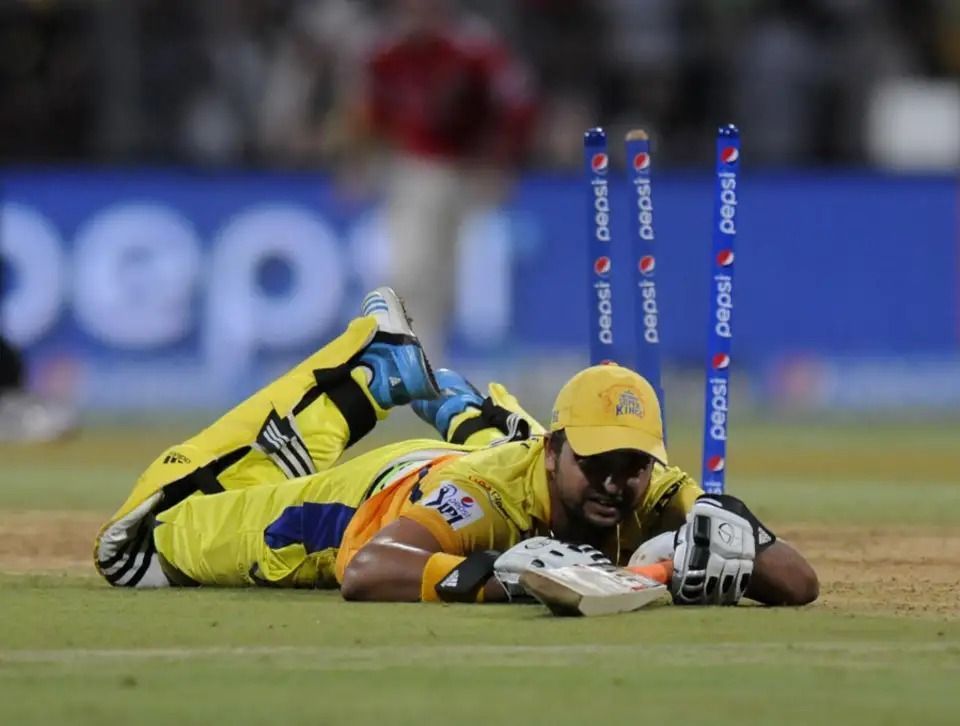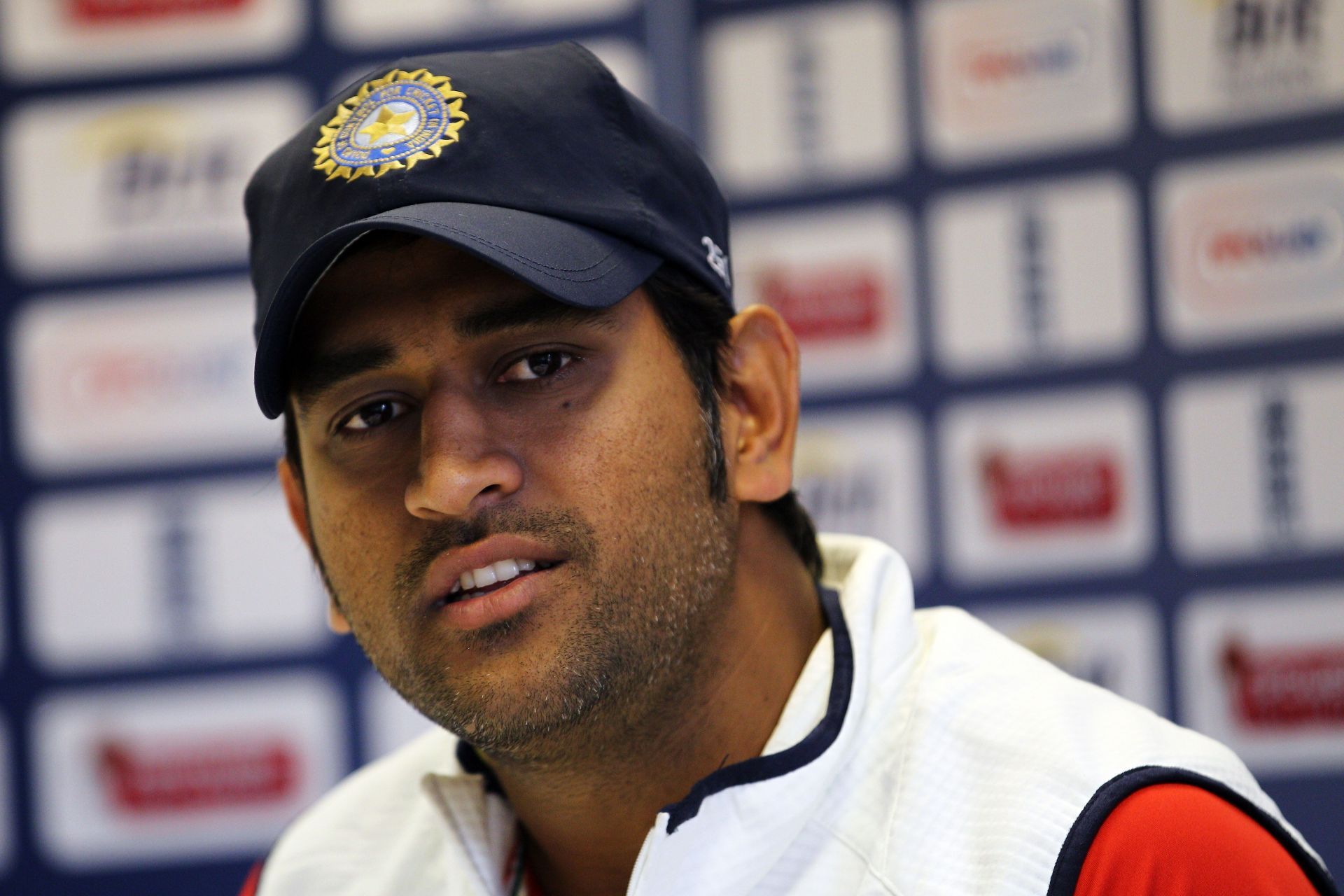
Suresh Raina's 87(25): A 2014 glimpse into a future we still aren't in
On May 30, 2014, Suresh Raina gave us a glimpse into the future of T20 cricket. And exactly 10 years later, we continue to use that brief snapshot as an indication of things to come, because we still aren't in that reality.
Among all innings in IPL history that yielded at least 25 runs, 20 had a higher strike rate than Raina's 87(25). Only two of those 20 yielded more than 50 runs. Only one of those lasted more than 18 balls. None of those came anywhere close to producing the overall impact of his knock.
IPL 2024 was a tournament of record-breaking run-scoring. The highest total record, which stood for over a decade, was shattered four times. Seven of the top 10 highest totals in the league now belong to the latest campaign.
![Run-scoring has touched new heights lately [Image Courtesy: Sai Krishna (@parkedatcover)]](https://statico.sportskeeda.com/editor/2024/05/c1945-17170644094052-1920.jpg?w=500)
And yet, Suresh Raina's feat lives on. His strike rate on that fateful night for the Chennai Super Kings read 348. At the time, Raina had obliterated the record for the fastest IPL innings lasting at least 10 balls. That wasn't a surprise. But how, after so many developments in the game, is that record still standing?
Is Suresh Raina's 87(25) the greatest T20 innings of all time?
There are three broad metrics that define the "greatness" of an innings. And numbers alone can't make an innings great, but storylines can.
The quintessential and oft-criticized "big stage" is one of them, even if it isn't the easiest thing to admit. Those games just stay in memory longer; their context is greater and their viewership is higher.
The quality of opposition is another important factor.
The batter in question overcoming limitations might not seem like a greatly influential element, but it is. How an innings is viewed is directly and totally linked to whether the batter is perceived to have vaulted over obstacles, even ones that are actually non-existent. People just love a hero, and when they don't have one, they conjure one.
The stage was, in fact, big. It was Qualifier 2. A berth in the summit clash was on the line. Scoreboard pressure was a factor, with Virender Sehwag having fired his team to a daunting 226/6, a total that is still the second-highest in IPL playoff history.
The quality of opposition was high - really high. Under George Bailey, Kings XI Punjab, as they were called then, reached their maiden IPL final after finishing atop the league table.
In IPL 2014, Mitchell Johnson, Sandeep Sharma and Parvinder Awana combined for 45 wickets. The former two had economy rates under 9 over the season while being tasked with the challenging overs. Sandeep, a decade later, has one of the most enviable bowling records in the league. The conditions at the Wankhede suited the style of all three bowlers.
And most importantly, concerning the third factor, some things just don't make sense about that Raina knock.
His most productive shot on the night was the pull, which fetched him 18 runs. The left-hander took down Johnson, who was close to his prime and breathing fire at 150 clicks, for 21 runs in six balls. Raina didn't face a single ball of his favored bowling style, spin.
Between the start of IPL 2015 and the end of his career, Raina didn't strike at above 130 against any length when the line was on the stumps. Yet, on that night, 11 of his 18 boundaries (12 fours and six sixes) were taken from a stump line.
![Suresh Raina wasn't great off the stumps [Image Courtesy: Sai Krishna (@parkedatcover)]](https://statico.sportskeeda.com/editor/2024/05/0d353-17170643543118-1920.jpg)
A notoriously poor puller and hooker, Raina averaged under 27 against the short ball over that phase, with a control rate of 68.5%. His strike rate was a whopping 20 points below that of the average batter against the short ball. He had also been terrorized by a Johnson barrage in an ODI at Mohali in 2013.
Yet, just a year after that, with the season on the line, Raina managed to butcher everything aimed at his head over the square leg boundary at the Wankhede Stadium. Of the 18 boundaries he hit, nine came between midwicket and fine leg, areas of the ground that weren't among those he preferred to access.
In his IPL career, Raina struck at 132.7 in the powerplay. He was no Jake Fraser-McGurk. To a certain extent, he was Abhishek Sharma before Abhishek Sharma was Abhishek Sharma, but he wasn't anywhere near as intent-rich and destructive. The game just didn't demand it then.
Yet, on that night, Raina struck at 348. His boundary percentage was higher than double his IPL career batting average.
Suresh Raina's legacy will stand the test of time, even if his records don't

Only a Brendon McCullum brainfade and a bit of George Bailey brilliance could send him back to the dugout. A strategic timeout just after the powerplay can't have helped matters, although those might be the words of someone desperately searching for reasons to explain why something so beautiful had to be so cruelly cut short.
Raina had done so much, on such a grand occasion, in such brutal fashion, that MS Dhoni gave one of his harshest post-match interviews till date.
"I think definitely it was something we could have achieved, the reason being Suresh [and] the way he batted," Dhoni said. "I think in the middle overs there was some very irresponsible cricket by some of the most experienced international cricketers, so I think definitely we need to have a look, in a game like this when the stakes are high, you can't really commit mistakes."
"The way they started, I had belief in my bowling that they will definitely let them score over 200 runs. But overall they batted really well," Dhoni stated, not sparing his bowlers of a thinly veiled dig.
The game of cricket, particularly T20s, will continue to evolve if pitches remain batting-friendly. Intent will go through the roof. Soon, captains will praise their bowlers for keeping the score close to 200 runs. Boundary percentages will touch 50, and average strike rates will cross 200.
Suresh Raina's 87 off 25 will then be lost in a table filled with knocks that were once unfathomable. That day will come; almost all records wither in the face of time.
But a lot of those who watched that knock unfold in real time, and even those who look back on it in 2024, will know that they witnessed arguably the greatest T20 knock of all time.